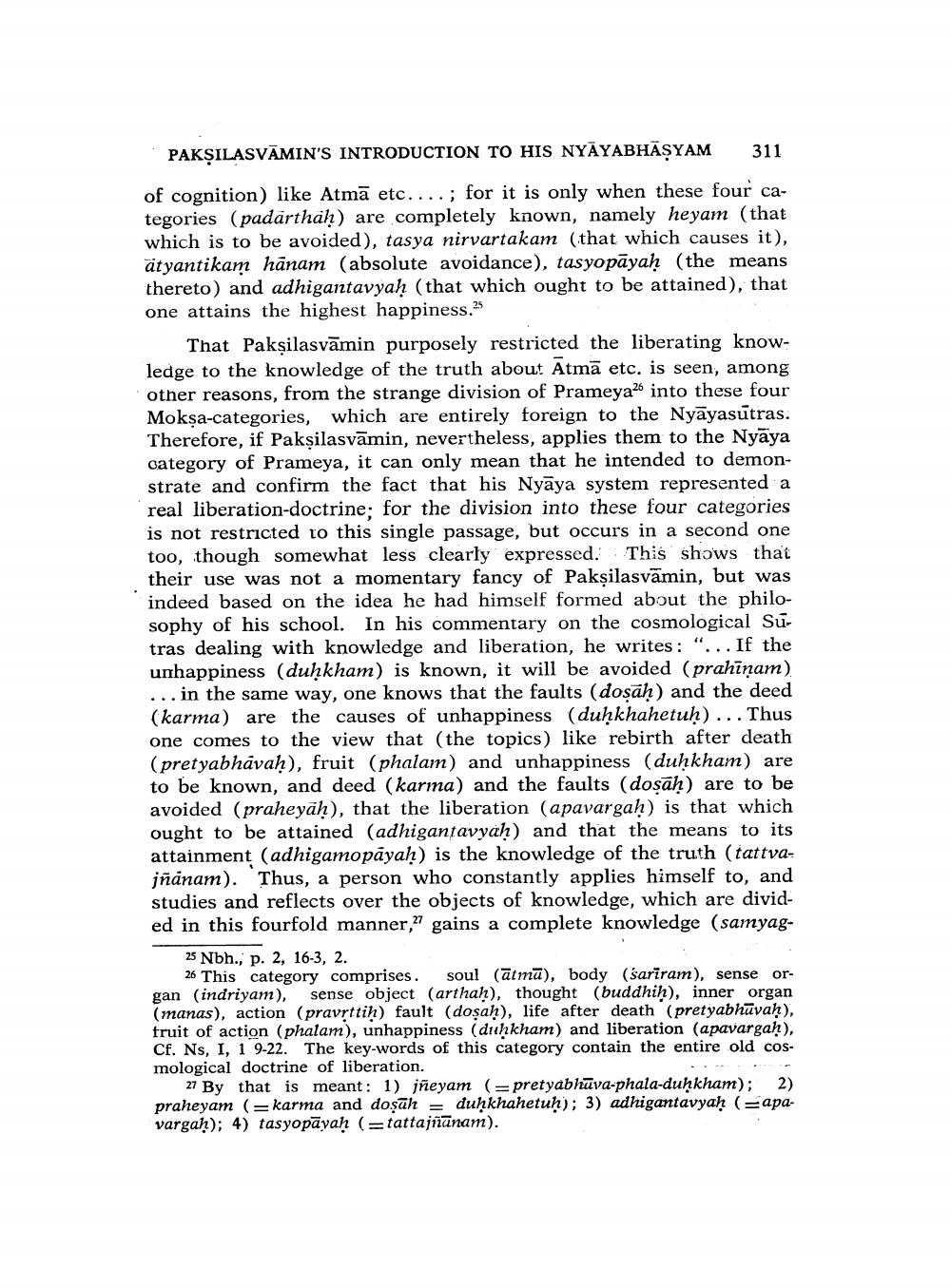________________
PAKŞILASVĀMIN'S INTRODUCTION TO HIS NYAYABHASYAM
311
of cognition) like Atmā etc. ... ; for it is only when these four categories (padarthah) are completely known, namely heyam (that which is to be avoided), tasya nirvartakam (that which causes it), atyantikam hānam (absolute avoidance), tasyopāyaḥ (the means thereto) and adhigantavyah (that which ought to be attained), that one attains the highest happiness."
That Paksilasvāmin purposely restricted the liberating knowledge to the knowledge of the truth about Atmā etc. is seen, among other reasons, from the strange division of Prameya26 into these four Mokşa-categories, which are entirely foreign to the Nyāyasutras. Therefore, if Paksilasvāmin, nevertheless, applies them to the Nyāya category of Prameya, it can only mean that he intended to demonstrate and confirm the fact that his Nyāya system represented a real liberation-doctrine; for the division into these four categories is not restricted to this single passage, but occurs in a second one too, though somewhat less clearly expressed. This shows that their use was not a momentary fancy of Paksilasvāmin, but was indeed based on the idea he had himself formed about the philosophy of his school. In his commentary on the cosmological Sur tras dealing with knowledge and liberation, he writes: "... If the unhappiness (duḥkham) is known, it will be avoided (prahiņam) ... in the same way, one knows that the faults (dosah) and the deed (karma) are the causes of unhappiness (duḥkhahetuh)... Thus one comes to the view that the topics) like rebirth after death (pretyabhāvah), fruit (phalam) and unhappiness (duḥkham) are to be known, and deed (karma) and the faults (dosah) are to be avoided (praheyah), that the liberation (apavargah) is that which ought to be attained (adhigantavyah) and that the means to its attainment (adhigamopāyaḥ) is the knowledge of the truth (tattvajñanam). Thus, a person who constantly applies himself to, and studies and reflects over the objects of knowledge, which are divided in this fourfold manner,27 gains a complete knowledge (samyag
25 Nbh., p. 2, 16-3, 2.
26 This category comprises . soul (ātmā), body (sariram), sense organ (indriyam), sense object (arthah), thought (buddhih), inner organ (manas), action (pravrttiḥ) fault (doşah), life after death (pretyabhāvah), fruit of action (phalam), unhappiness (duhkham) and liberation (apavargan), Cf. Ns. I, 1 9-22. The key-words of this category contain the entire old cosmological doctrine of liberation.
27 By that is meant : 1) jñeyam (=pretyabhāva-phala-duḥkham); 2) praheyam (= karma and doşāh = duḥkhahetuh); 3) adhigantavyah (=apavargah); 4) tasyopāyaḥ (=tattajñanam).




